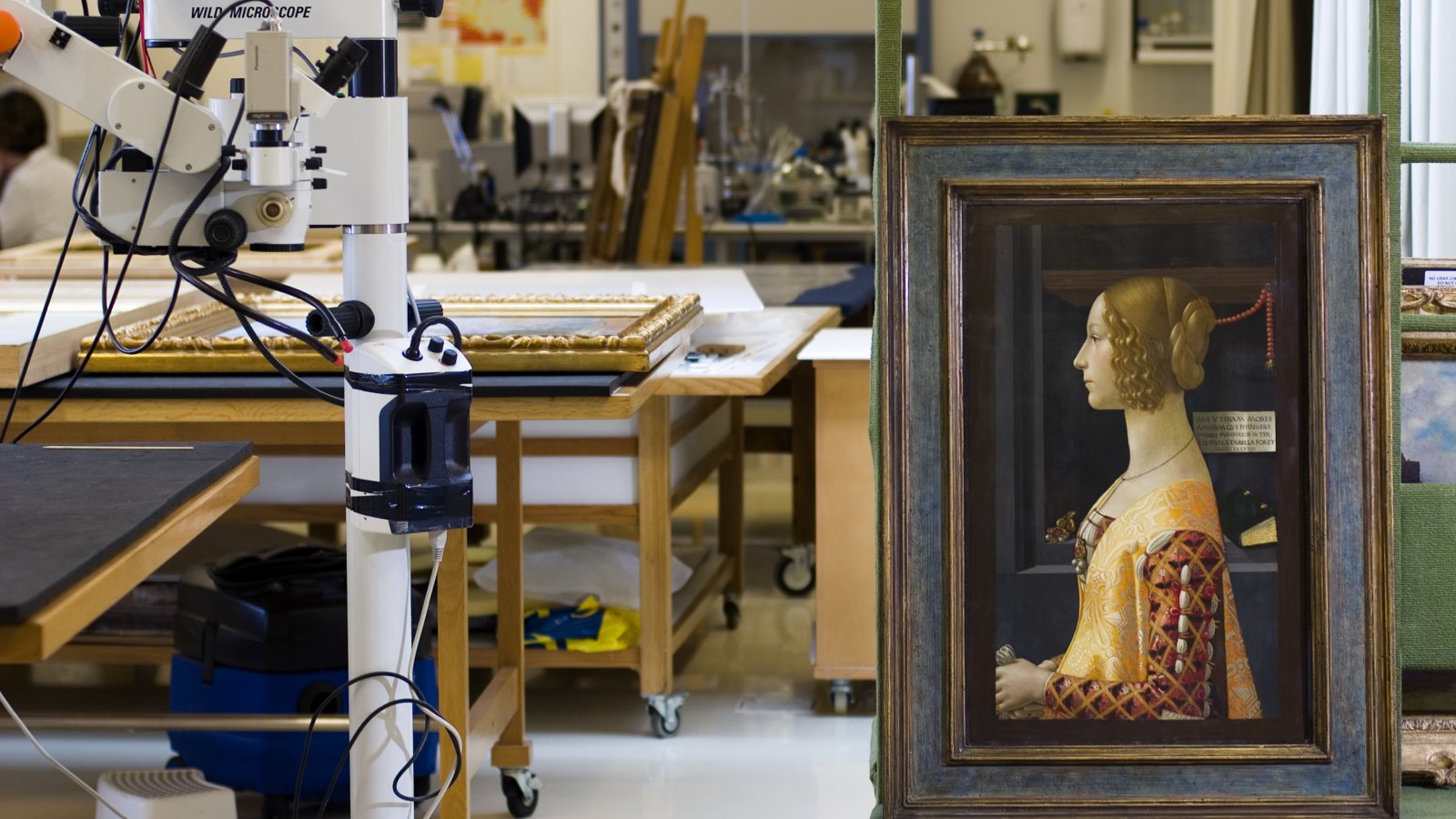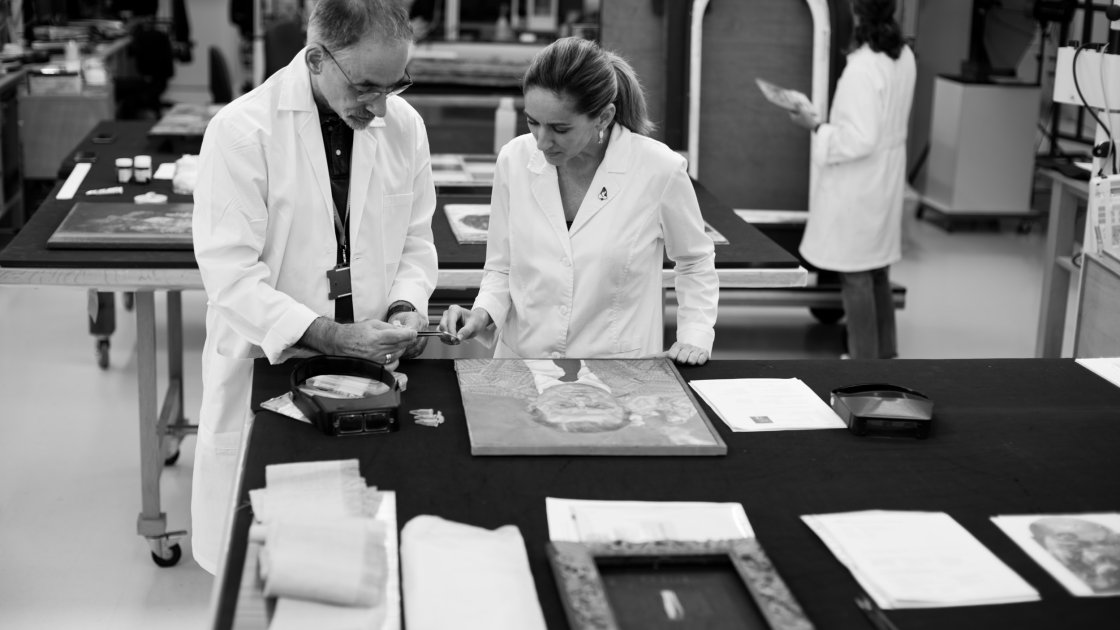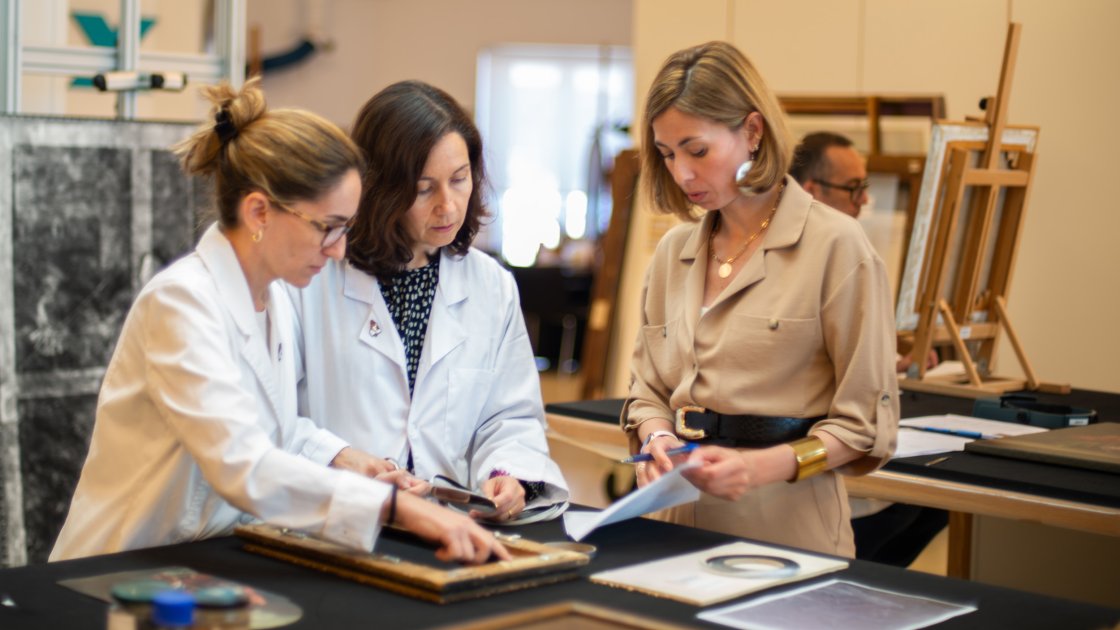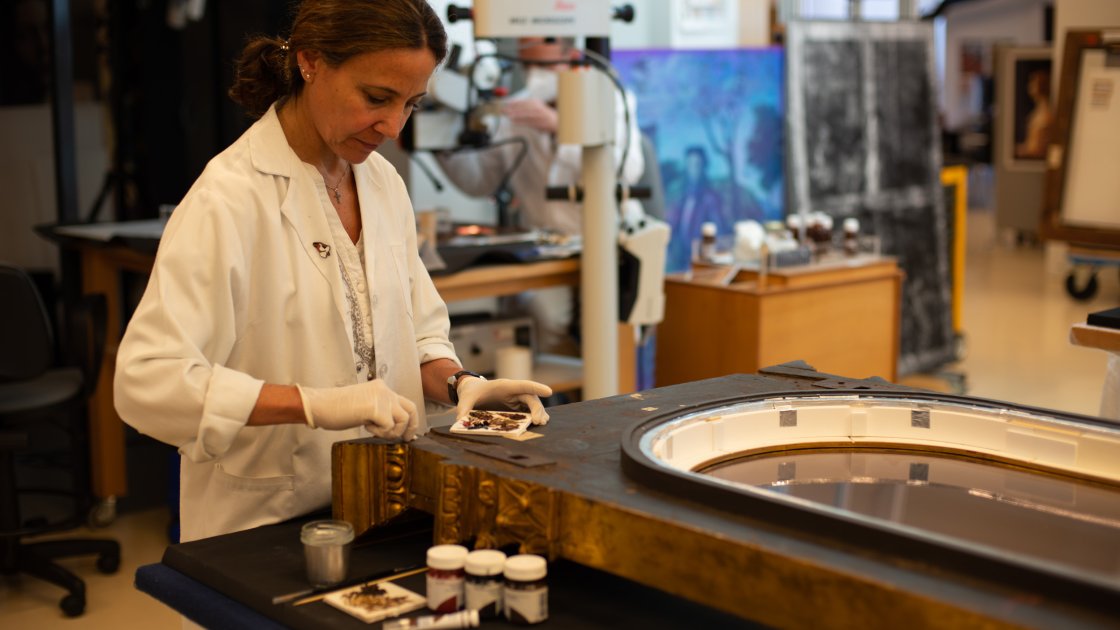We are the Conservation Area
A multidisciplinary team of specialists
A team of specialists is in charge of the conservation, restoration and research of the pieces in the Museum's care.
This means that it deals with all aspects of the preventive conservation of artworks, guaranteeing their stability and preservation, as well as restoration treatments. It also studies their behaviour and surrounding conditions and the elements and conditions necessary for their possible movement and/or transport.
Constantly upgraded equipment and the use of state-of-the-art analytical methods make it possible to perform conservation/restoration and in-depth studies on artworks. Techniques such as digital macro photography with visible light, ultraviolet photography, infrared reflectography and X-radiography, as well as a chemical analysis laboratory, facilitate the Museum's research projects and collaboration with other institutions.
The team and its history
The restoration department at the Museo Nacional Thyssen-Bornemisza is responsible for carrying out restoration, technical studies and preventive conservation of the collections in the Museum's care. To perform these tasks, it has a team of four conservators, one of whom is in charge of the department, plus three external collaborators, a photographer for the technical documentation of the collections, a backup photographer, a chemist in charge of the materials analysis laboratory and an assistant who coordinates projects and deals with managerial and administrative aspects, under the direction of a head of department.
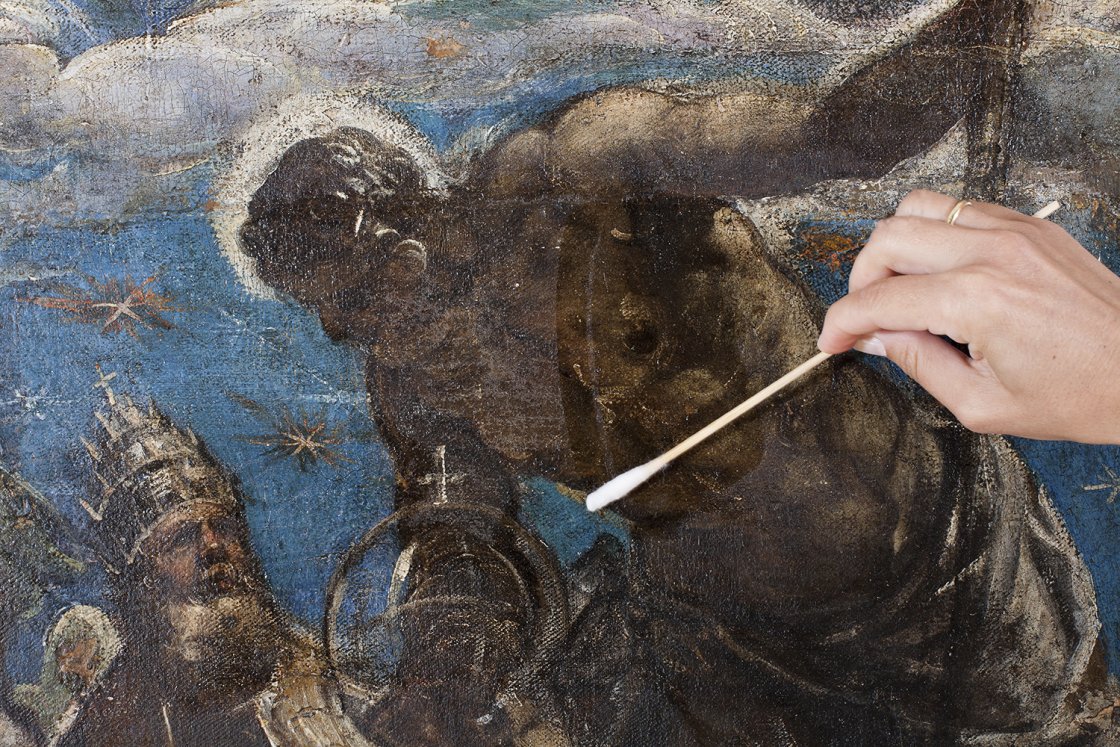
A bit of history…
The current department grew out of the initial laboratory that was established when the collection was first installed in Madrid in 1992 to guarantee its conservation during the agreed loan period. It was equipped with the necessary resources and underpinned by very strict criteria to meet the conservation and preservation requirements stipulated in the loan agreement, as well as to keep at bay any peripheral agents that might have a negative influence on the works of art in the collection. It was, therefore, a strategic centre that ensured that these needs were addressed and developed the preventive conservation policy.
Barely a year later, in 1993, an agreement was reached in the negotiations for the acquisition of most of the Thyssen Collection by the Spanish state, as a result of which these holdings came to be housed permanently in the Museum.
This new situation called for a laboratory for analysing and identifying materials that was located in the workspace, so as to facilitate contact between the chemist and the conservators. A studio for technical photography and reflectography was installed, along with an X-ray room with shielding walls, and various collaboration agreements were signed with the most important museums and various cultural institutions. With the appropriate infrastructure in place, the department embarked on a line of research that is still ongoing.
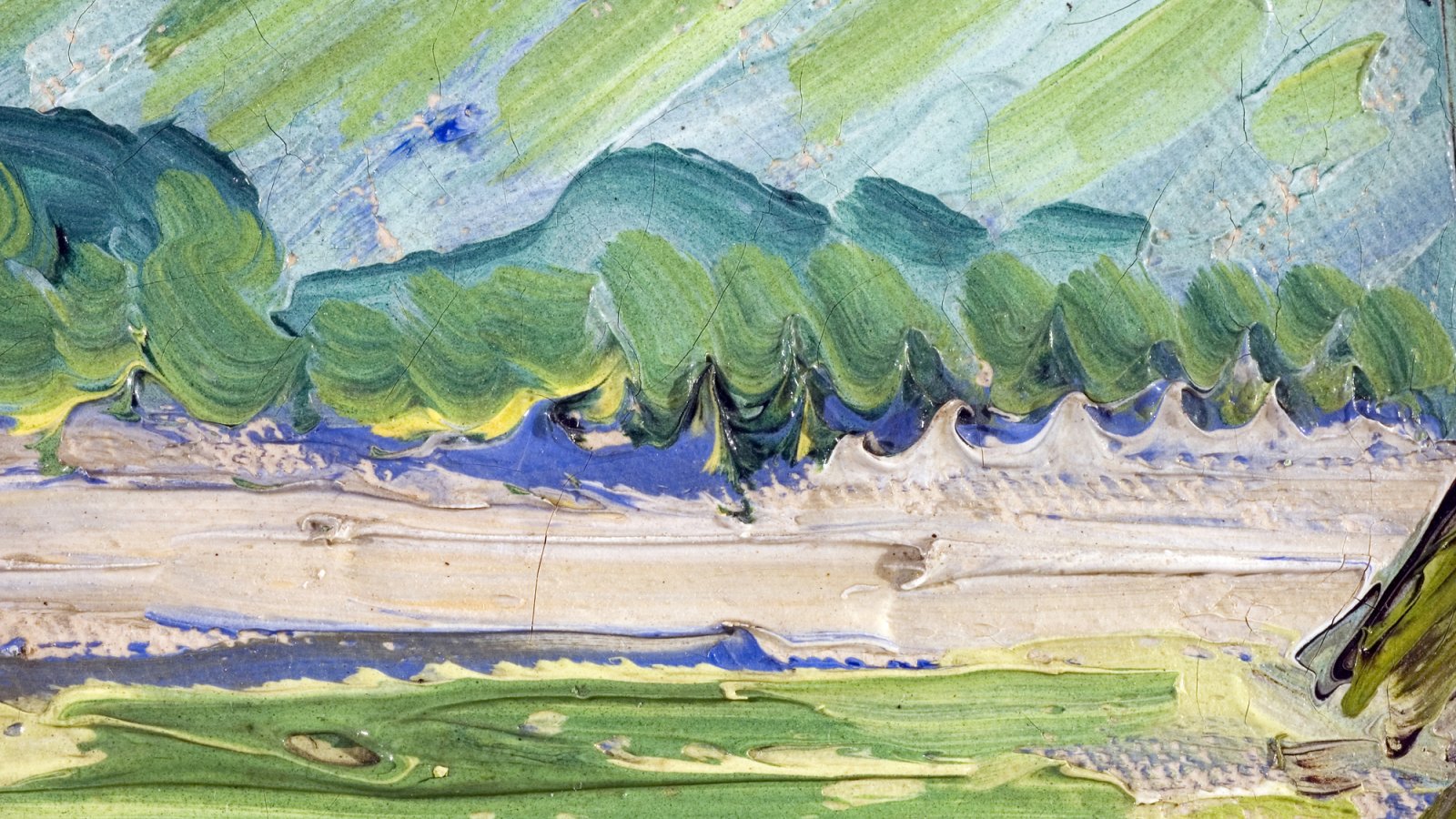
Understanding conservation
The restoration team's missions
Restoration and Technical Studies
Its duties include studying the techniques and materials used in artworks, as well as analysing the causes and processes of their deterioration. The conclusions drawn are used to establish conservation measures and, where necessary, propose the most appropriate treatments or interventions.
It strives to restore the integrity of works by applying treatments that prolong the life of these cultural assets and to remedy the damage caused by the passage of time and the ageing of materials.
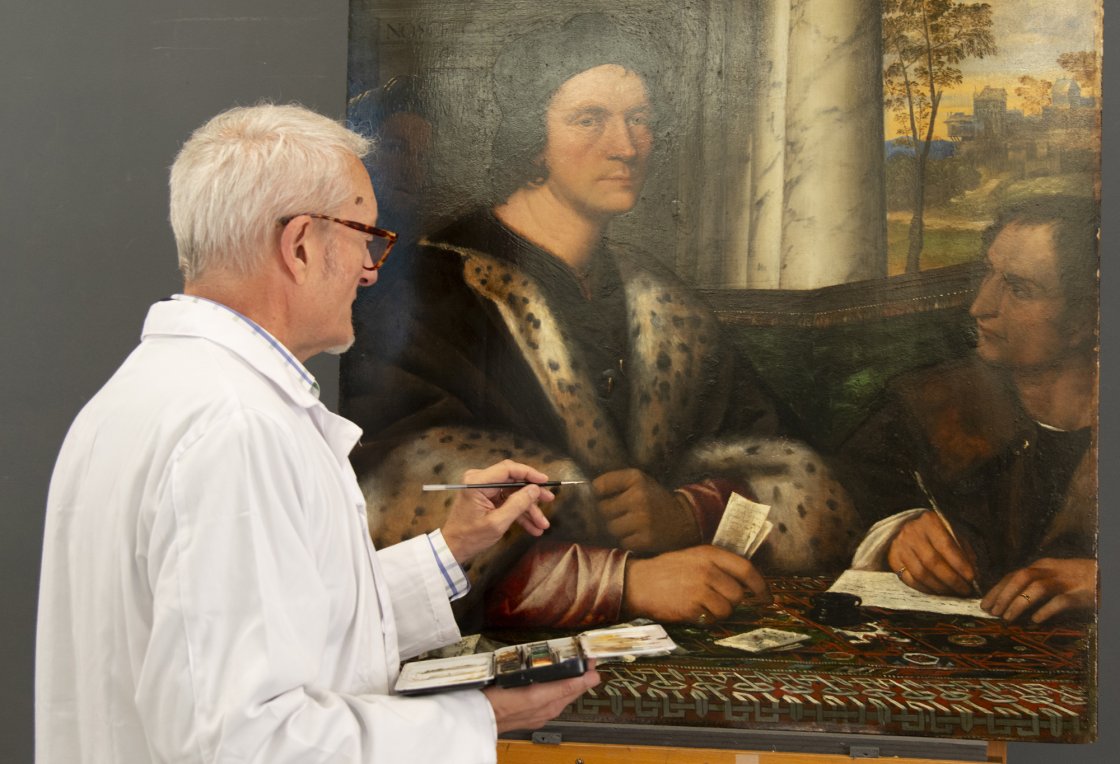
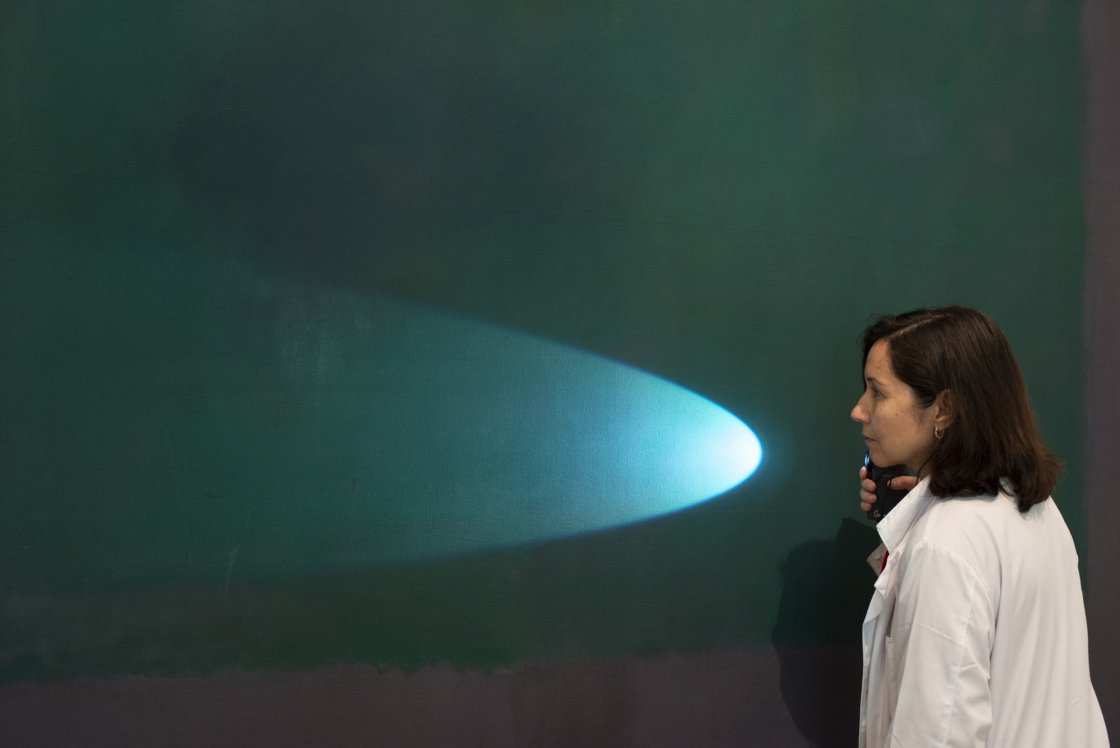
Preventive Conservation
The restoration department is responsible for the conservation of the works housed in the museum. The purpose of preventive conservation is to adopt possible measures and actions designed to prevent or minimise any damage that may affect the heritage in our care. Much of its philosophy is based on risk assessment protocols that make it possible to foresee damage and implement appropriate preventive and protective measures in keeping with the characteristics and nature of the works.
